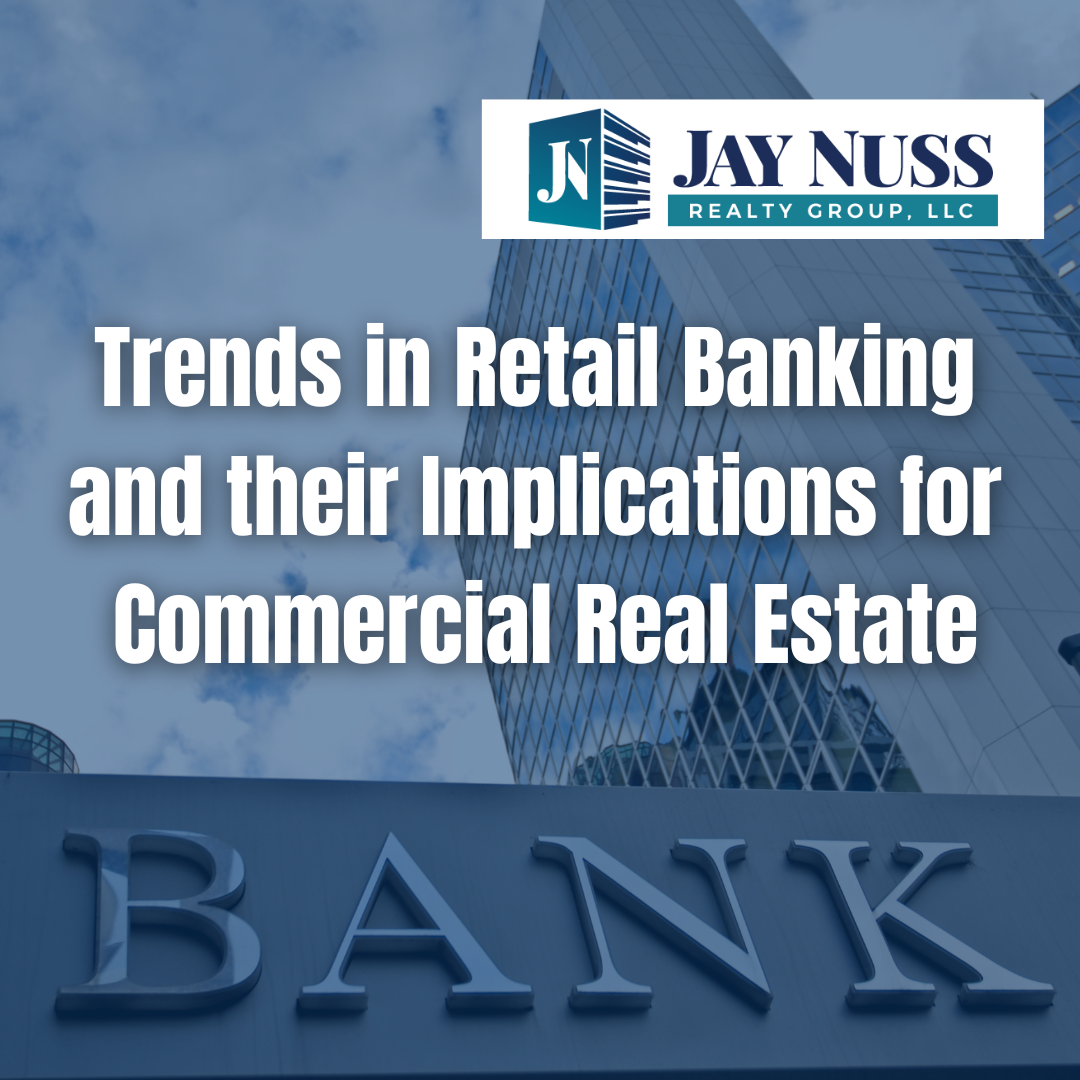As a commercial real estate broker serving the Greater Boston and Eastern Massachusetts market, staying ahead of emerging trends that impact our industry is crucial. One sector undergoing significant transformation is retail banking, with ripple effects reshaping the commercial real estate landscape. Let’s explore current trends in retail banking and their implications for commercial real estate in our region.
The Shifting Landscape of Retail Banking
The retail banking sector is evolving rapidly, driven by technological advancements, changing consumer behaviors and economic pressures. At the forefront of this evolution is the digital transformation sweeping through the industry. Banks are increasingly moving towards digital platforms, with mobile and online banking becoming the norm rather than the exception. This shift is reducing the need for large, brick & mortar bank branches and prompting many institutions to reevaluate their physical footprint.
However, this digital shift doesn’t spell the end of physical locations. Instead, we’re witnessing a transformation in their purpose and design. The future of banking appears to be a blend of digital and physical experiences, with many banks experimenting with smaller, technology-driven branches. These new-style branches often serve as advice centers and provide complex services that can’t be easily handled online.
In tandem with this hybrid approach, banks are reimagining their spaces to create more welcoming, less transactional environments. This often involves open floor plans, comfortable seating areas and spaces for financial education and community events. The focus is squarely on enhancing the customer experience, moving away from the sterile, transaction-focused model of the past.
Another significant trend is the increasing integration of artificial intelligence and automation in banking operations. From chatbots for customer service to automated tellers for routine transactions, these technologies are becoming commonplace, further influencing the design and function of physical bank spaces.
What Does All This Mean for Commercial Real Estate?
These trends in retail banking are having significant impacts on the commercial real estate market in Greater Boston and Eastern Massachusetts. The shift towards smaller, more efficient branches is changing the type of commercial spaces banks are seeking. We’re seeing increased interest in smaller footprints, often in the range of 2,000-3,000 square feet, down from the traditional 4,000-5,000 square foot model. Location remains crucial, but the criteria are shifting. Banks are looking for high-visibility sites in areas with strong foot traffic, often preferring urban centers and mixed-use developments over standalone suburban locations.
As some banks vacate larger spaces, we’re seeing opportunities for adaptive reuse. These former bank buildings, often in prime locations, are being repurposed for retail, office space or even residential use. In the Greater Boston area, we’ve seen successful conversions of former bank buildings into trendy restaurants, co-working spaces and boutique hotels. This trend is breathing new life into older buildings and contributing to the dynamism of our urban landscapes.
The increasing reliance on technology in banking operations means that properties need robust digital infrastructure. Buildings with high-speed internet capabilities and the ability to support advanced security systems are in high demand. This trend is driving renovations in older buildings to bring them up to the necessary technological standards, creating opportunities for property owners and developers who can meet these new requirements.
Flexibility is becoming a key feature in bank branch design. Banks are seeking spaces that can be easily reconfigured to accommodate changing needs. This flexibility allows them to adapt to evolving customer preferences and technological advancements without the need for frequent relocations. As a result, we’re seeing increased interest in properties that offer open floor plans and modular design elements.
Despite the shift towards digital banking, drive-through services remain popular, especially in suburban areas. Properties that can accommodate drive-through lanes are still in demand, particularly those that can be easily retrofitted with advanced ATM technology. This highlights the continued importance of convenience and accessibility in banking services.
As banks focus more on creating community hubs, we’re seeing increased interest in properties that offer opportunities for integration with the local community. This might include spaces for hosting events, financial literacy classes or even co-working areas. In Eastern Massachusetts, we’ve observed banks seeking locations near complementary businesses like coffee shops or in mixed-use developments that naturally foster community interaction.
Sustainability is also becoming a priority for many banks as part of their corporate responsibility initiatives. This is translating into a preference for green buildings or properties that can be upgraded to meet high environmental standards. In the Boston area, LEED-certified properties or those with potential for certification are attracting significant interest from banking tenants.
What Does the Future Hold?
As we look ahead, it’s clear that the relationship between retail banking and commercial real estate will continue to evolve. While we may see a reduction in the overall square footage occupied by banks, the importance of strategic physical locations is not diminishing. Instead, we’re witnessing a transformation in how these spaces are utilized and valued.
As some traditional bank branches close, we need to be creative in finding new uses for these often well-located properties. The ability to envision and market innovative adaptive reuse strategies will be a valuable skill in our industry.
The future of retail banking is reshaping the commercial real estate landscape in Greater Boston and Eastern Massachusetts. As brokers, we can help our clients navigate this changing landscape, identifying opportunities that align with the evolving needs of the banking sector and the communities they serve.
For further information on this topic, please call us at 781.848.9400.

